The question seems a simple one. And, in principle, it is. How do I get to the top of a Google search? In 2025, SEO—short for Search Engine Optimization—is searched for over 200,000 times every month in the US alone. It’s a term people are familiar with, even if they don’t understand it. And I think that’s reasonable. SEO and the top SEO strategies change on a year-over-year basis.
Are SEO Strategies Simple?
My friends in the digital marketing space say SEO is simple. And to be honest, it is. In a complicated way. What I think proponents of the “SEO is simple” line of thought miss is how difficult it is to get started, especially if your organization exists in a highly competitive or in a niche business sector.
So, I amend the view “SEO is simple” to “SEO can be simple, once the pieces are in place.”
SEO and SEO strategies are a digital chess game played against an evolving, and increasingly intelligent algorithm (as recently as March 2025, Google completed its most recent core update). If you’ve ever played chess, you know it’s easy to lock your opponent into checkmate, once you’ve set up your Benko Gambits, set up your forks, castles, iron embraces, en passants, and Philidor Positions (only one of those is made up). That’s the hard part.
I think of SEO in the same way. It is simple; at least in principle. But the castle needs to be built first (without burning down, falling over, and sinking into the swamp) and the keys need to be arranged first. That’s the hard part.
So, what are these pieces and how do you put them in place?
How Does Your SEO Strategy Stack Up?
3 Core Tenants of Strong SEO Strategies
There are three central components to strong SEO strategies, with some extra specificity to keep in mind once the main pillar is built.
1. Front-End SEO
Front-end SEO, also known as on-page SEO, is what you’re looking at as you read this. It is focused on optimizing content and HTML source code to make it easier for search engines to understand what your page is about so they can serve up the content users are looking for.
How is it done?

Your Keyword Strategy
Keywords are the breadcrumbs your readers leave across the internet. Your job? To find those trails and strategically place your signposts (your content) along the way.
- Think Like Your Audience: It’s important to break out of what you call something. What do your readers call it? What words and phrases do they type into that search bar? Use keyword research tools like Keywords Everywhere and SEMRush to uncover these gems. Pro Tip: long-tail keywords are more specific searches, but they’re often associated with readers further along in their buyer’s journey.
- Search Intent: It’s not enough to only think about what people are searching—you also need to think about why they’re looking for it. Are they looking to buy, to learn, or to find a local resource? Tailor your keywords and content to match that underlying intent.
- Sprinkle, Don’t Flood: Once you’ve got your keywords, use them naturally in your content, titles, headings, meta descriptions, and even image alt text. You’re seasoning, not marinating. Overusing your keywords, also known as keyword stuffing, is no longer a best practice. Google’s gotten really good at understanding contextual relevancy; they know if you’re shoehorning in a keyword for the sake of including it.
Developing Quality Content
Content is the reason search engines find your site and why people stick around on it. It is what adds the muscle to your website’s structure.
- Solve Problems, Answer Questions: Your content should be genuinely helpful and valuable to your audience. Address their pain points, answer their burning questions, and offer insightful perspectives.
- Be Original: Don’t just rehash what everyone else is saying. Bring your unique voice, your expertise, and your fresh perspective to the table. Google rewards originality.
- Create Opportunities to Engage: Keep your readers hooked! Use compelling language, break up text with visuals, and encourage interaction (comments, shares). The longer they stay and engage, the better signal it sends to Google.
Header Tags: Structuring for Success
Think of header tags as both shortcuts to and overview of your content. They tell readers and search engines what’s important and how your information is organized.
- H1: The Title: This is the main headline of your page. There should only be one and it should state the main topic and include your primary keyword.
- H2s: Major Landmarks: These are subheadings that break down your main topic into sections. They help readers scan and understand the structure.
- H3-H6: Guiding Details: Use these for further subsections and specific points within your H2s. They create a clear hierarchy and make your content easily digestible.
Use the header tags in sequential order (don’t jump from H1 to H3). This creates a clear outline for search engines to understand the relationships between different parts of your content.
By mastering the front-end elements, you lay a strong foundation for your SEO success. You’re making your website discoverable, engaging, and easy for both your audience and Google to understand.

2. Back-End SEO
While front-end SEO is about making your content shine, Back-End SEO is about building your website’s overall authority and trustworthiness in the eyes of search engines. If the front-end was for both people and search engines, back-end SEO is just for the search engines and what Google sees behind the scenes. Here’s some tips:
Link Building
Links from other websites to yours, called backlinks, are like votes of confidence. They tell Google that other people find your content valuable, trustworthy, and accurate. But not all links are created equal!
- Quality Over Quantity: A few high-quality links from reputable websites are worth far more than a mountain of low-quality links from spammy sites. Think of it as getting a glowing review from a renowned food critic versus a bunch of random comments on a little-known blog.
- Natural is the Name of the Game: The best links are earned naturally, through creating truly excellent content that people find helpful. For example, earlier in this blog, I referenced a Google Algorithm update and gave a backlink to Search Engine Journal because I regularly read their updates and find them a trustworthy source of information.
- Link Building: You can also proactively reach out to other website owners, bloggers, and influencers in your industry to let them know about your valuable content and suggest they link to it. This should be a genuine effort to connect and provide value, not just a link grab.
Brand Mentions and Public Relations
Even when a website doesn’t directly link to you, simply mentioning your brand name can still boost your SEO. It shows Google that your brand is being talked about, which contributes to your overall authority and recognition.
- Build Relationships with Influencers and Media: Building relationships with key people in your industry can lead to both links and brand mentions in their articles, blog posts, and social media.
- Press Releases: When you have something newsworthy to announce (a new product, a special event, a community initiative), a well-crafted press release can generate valuable media coverage and brand mentions.
- Local SEO and Citations: For local businesses, getting listed in online directories (like Yelp, Google Maps, etc.) is crucial. These “citations” help Google verify your business’s legitimacy and improve your local search rankings.
3. Technical SEO
Technical SEO refers to optimizing website infrastructure. Because search engines like Google want to provide their users with the best possible experience, a big part of that is making sure the websites they direct searchers to are high-performing and trustworthy.

Here are the elements of technical SEO:
- Site speed and performance: Use a tool like Google’s PageSpeed Insights to identify bottlenecks. Optimize images (compress them and use sized images), leverage browser caching, and consider a Content Delivery Network (CDN).
- Site architecture: Create a clear, logical hierarchy of pages. Use descriptive URLs, and make sure your most important content is easily accessible from the homepage. A well-organized site is easier for both users and search engines to navigate.
- Crawlability / Indexability / robots.txt: A robots.txt file tells search engines which pages to crawl and which not to. Also, submit an XML sitemap to Google Search Console to help them discover your pages. Ensure your site doesn’t have crawl errors.
- SSL encryption: An SSL certificate (HTTPS) is non-negotiable today. It encrypts the data transmitted between the user’s browser and your server, protecting sensitive information and signaling to Google that your site is trustworthy.
Other SEO Strategies
There are many other strategies that are important to SEO but don’t fit into the three core tenants.
- Local SEO: Local SEO is a set of practices that help businesses rank higher in search results for local search queries.
- Video / Image SEO: Optimizing videos and images for search engines can make them more discoverable and improve overall SEO performance.
- Optimize for AI Overviews and Voice Search: With the rise of AI-powered search overviews and voice search, it’s increasingly important to optimize content to be easily understood and directly answer user questions.
Is There a One-Size-Fits-All SEO Strategy? No.
We’ve covered a lot of ground today about the fundamentals of SEO, from dispelling the myth of its simplicity to outlining its three core tenants: Front-End, Back-End, and Technical SEO.
Remember, SEO is dynamic, ongoing, and requires adaptation.
Ready to elevate your SEO? Contact Sharp Wilkinson for expert guidance in this ever-evolving landscape.


![20250616_SPW_SEOSmallBizGuideCTA_1080x1080 Boost Your Online Visibility! Unlock the secrets to a top-ranking website with our FREE SEO Guide for Small Businesses. [Download Your Guide Now!]](https://sharpwilkinson.com/wp-content/uploads/2025/06/20250616_SPW_SEOSmallBizGuideCTA.png)



